Introduction of Papua New Guinea Coffee varieties description of taste and flavor of Paradise Bird Xiaolan Mountain Coffee beans
Professional coffee knowledge exchange more coffee bean information please follow the coffee workshop (Wechat official account cafe_style)
Speaking of Blue Mountain Coffee, Qianjie believes that coffee fans are no stranger to Jamaican Blue Mountain Coffee. Have you heard of the Little Blue Mountain Coffee from Papua New Guinea? why is it called Little Blue Mountain? The Little Blue Mountain Coffee of Papua New Guinea has been specially brewed for the previous street. Qianjie thinks that it is not inferior to the Blue Mountain Coffee, which is more soft and sour than the mellow Blue Mountain. Then let's talk about Little Blue Mountain Coffee in front of the street.
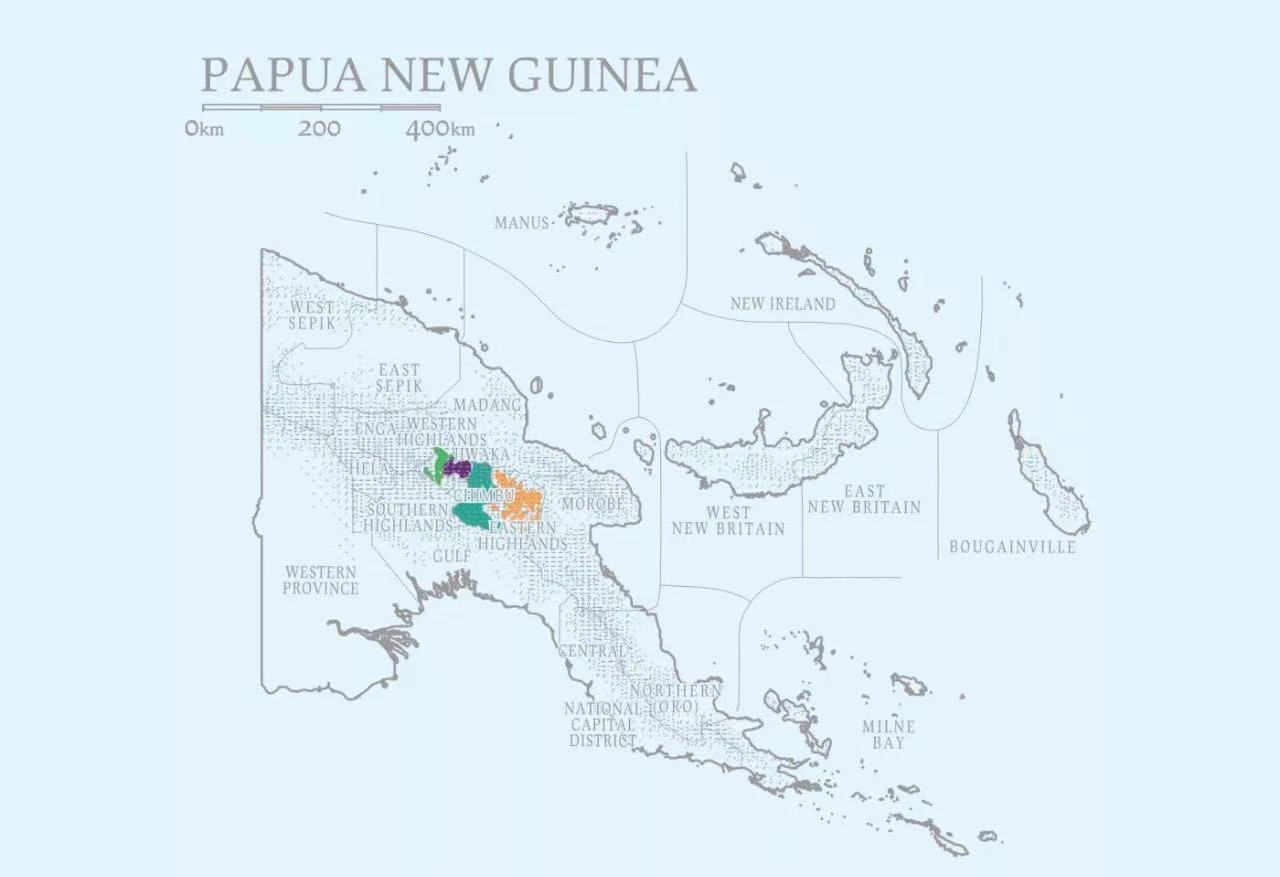
Growing conditions of coffee in Papua New Guinea
Papua New Guinea is located in the South Pacific. As an island country, its population and land area are second only to Australia in the South Pacific. And Qianjie knows that it still retains its native language and traditional customs for nearly a thousand years, and its natural environment is also one of the least developed countries in the world. Qianjie thinks that it is because of this that coffee cherries in Papua New Guinea retain the most primitive flavor.
According to Qianjie, Papua New Guinea is located between the equator and 10 degrees south latitude, is a standard island climate, between 1200-2500m above sea level, but also a high incidence of volcanic eruptions, so there is also easy to grow coffee volcanic soil, and its comprehensive planting conditions, but also set the tone for the high-quality flavor of Little Blue Mountain coffee.
History of coffee cultivation in Papua New Guinea
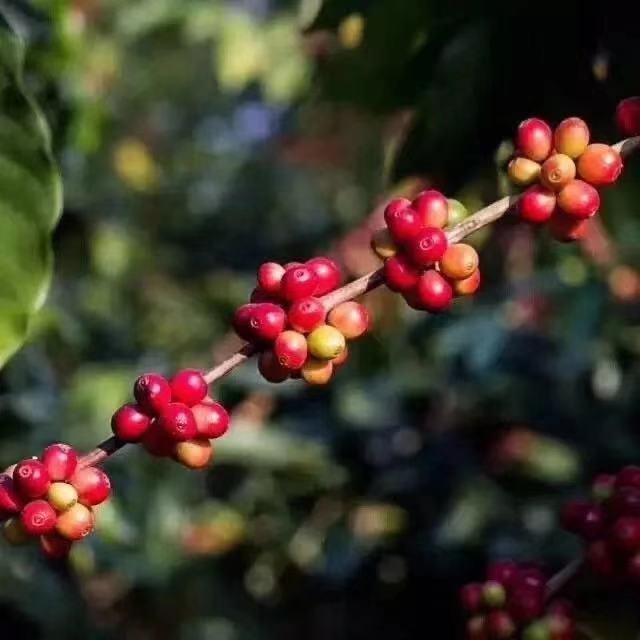
In 1931, Ironhide Card was introduced from Jamaica to Papua New Guinea. According to Qianjie reading materials, it is known that Britain had occupied Jamaica for nearly 300 years. The most representative coffee in Jamaica is the Blue Mountain Coffee of Iron Card. Because of the friendly relationship between Australia and Britain, so it is reasonable for Papua New Guinea to introduce tin cards. Bourbon coffee beans were introduced from Kenya in 1950. Coincidentally, Kenya was also a British colony at that time. The open cultivation encouraged by the government led to the substantial growth of the coffee industry in the 1970s and 1980s. Since moving to New World and Kaddura from Brazil in 1962, the quality of coffee beans in Papua New Guinea has made a great leap forward.
Manor in the coffee producing area of Papua New Guinea
As mentioned in the previous article on Qianjie, coffee must be grown above 1000m above sea level, so the boutique coffee of Papua New Guinea is mainly grown in Wahigi Valley and Sigri in the western highlands, Arona, Kimel, Arokare and Goroka in the eastern highlands.
One of the most famous is the Siguri Manor, and the Little Blue Mountain coffee on the front street comes from this manor, and then the front street gives
Coffee fans tell us why Qianjie chose the Little Blue Mountain of their manor.
Sigri Manor (Sigri)
The Papua New Guinea coffee beans in front of the street are from Siguri Manor. The manor was founded in 1950 and has been a pioneer in the local coffee industry for more than 60 years.
The Bird of Paradise Manor is located in the Waghi Valley Valley in the Western Highlands Province (Western Highlands), about 1500 meters above sea level, with mineral-rich volcanic soil, cool climate, fertile soil and abundant rainfall. Bird Paradise Manor also pays great attention to ecological protection, in order to protect soil and water, reject the use of pesticides and pesticides, and take care of the ecology and nearby birds.
According to Qianjie, the Sigri Manor is also called the Paradise Bird Manor because there are more than 160 different species of birds in the Wagi Valley, of which 90 species of birds come to live here, including the national symbol of Papua New Guinea, the Bird of Paradise, a veritable bird paradise. So Siguri Manor also has the name of Paradise Bird Manor.
According to Qianjie, the coffee beans of Paradise Bird Manor in Papua New Guinea are called Little Blue Mountains because Papua New Guinea people like paradise birds very much and regard them as divine birds from heaven. The tin card coffee beans of Siguri Manor are trekking from the Blue Mountains of Jamaica to Papua New Guinea like birds, and Papua New Guinea and Jamaica have the same island climate. The same high altitude and volcanic soil characteristics are therefore called the Little Blue Mountains.
And these are the reasons why Qianjie chose Paradise Bird Manor Little Blue Mountain coffee beans; and Qianjie passed the cup test to cook this little Blue Mountain also felt extremely amazing, as soon as the entrance had the sweetness of baked bread, as well as nutty and slightly sour fruit. Yuyun's spices are also quite sweet and rich and balanced. Qianjie believes that Xiaolan Mountain is the brightest and cleanest flavor in Asian coffee.
However, the flavor of Little Blue Mountain is different from that of Jamaican Blue Mountain Coffee. Qianjie believes that Jamaican Blue Mountain is a very mellow coffee flavor, while Papua New Guinea coffee is designed with a mellow and sour flavor.
Papua New Guinea Coffee grading
The grading system of coffee beans in Papua New Guinea is the same as that in Kenya, using the size of coffee beans as the grading standard. Although the size of coffee beans is not the absolute standard of flavor quality, it is a very useful reference index for coffee beans in some producing areas. Mature beans with strong growth, full shape and beautiful shape in these areas can best show good flavor, consistent maturity, hardness and moisture content, etc. It makes it easier for the baking process to achieve a homogeneous and perfect flavor, so many emerging producing areas will also classify this as a way of grading.
The following are the grading criteria for coffee beans in Papua New Guinea:
Class E: flat beans with more than 19 mesh, which is commonly known as elephant beans.
AA: between 17-18 mesh (7. 2-8.2mm).
AB grade: between 16-17 orders (6. 2-6.8mm), accounting for the majority of yield, but also the most common raw bean grade.
PB: round raw beans (4.7-6.6mm), each fruit has only one seed, and the shape is oval.
Class C: less than 14 mesh (4-6.3mm). It is not included in the fine grade because of its small size.
TT grade: from AA and AB grade beans, the lighter raw beans blown by air flow filter indicate that the beans are soft and the hardness is not up to standard.
T level: below 12 items. T grade is from C grade beans, the lighter raw beans blown by air flow filter, the beans are soft, the hardness is not up to standard, and the particles are small, and there are many defective beans.
MH/ML grade: beans that have not been washed and have not been selected, because they have been harvested, fall beans, accounting for about 7% of all coffee beans, belong to the lowest grade beans, only for the Kenyan domestic market.
TOP level: it is graded according to the cup test results. At present, it is not the official grading standard of Kenya. If exporters add their own grades, it is inevitable that there are commercial behavior factors to consider, so it can only be used as a reference. Everything still has to return to their own baking cup test, which is the correct reality.
PLUS (+) level: refers to the same bean, because of human factors, the standards of Company An and Company B are different, and there is no unified grading standard, so this can only be used as a reference, everything still has to return to their own cup test.
FAQ grade: Fair to Average Quality will have some slight defective beans, but does not affect the flavor.
The following is the information about the Little Blue Mountain Coffee organized by Qianjie Coffee.
Front Street Coffee Papua New Guinea Little Blue Mountain Coffee beans
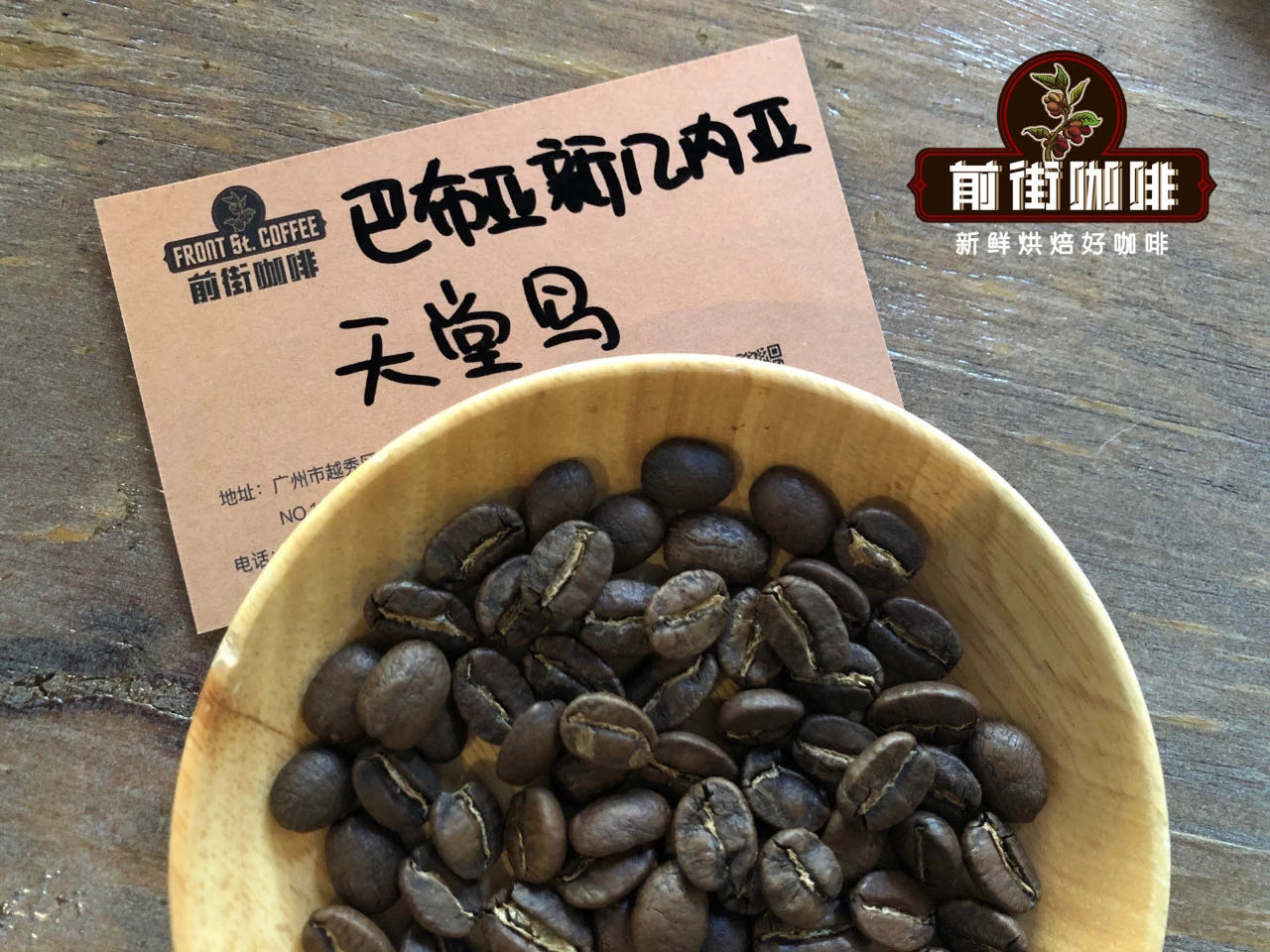
Country: Papua New Guinea
Origin: Sigley Paradise Bird Manor
Altitude: 1600-1800m
Variety: iron pickup
Treatment: washing treatment
Flavor: nutty, cocoa, soft citrus acid, cream, caramel finish
It is mentioned in the front street that the tin card variety was introduced in Papua New Guinea in 1931, so there must be coffee fans who ask what is so special about the tin card variety?
Iron pickup
In fact, tin card coffee beans originated in Ethiopia and southeastern Sudan, is one of the many ancient coffee varieties of Arabica, and all Arabica are derived from iron pickup coffee beans; the beans are oval or thin. The top leaf is red copper, called red top coffee, also known as the old variety of small grain coffee.
Qianjie believes that iron pickup coffee has its unique quiet and clean flavor, as well as balanced features, high cleanliness, but the only drawback is insufficient production, high altitude requirements, and easy to be infected with leaf rust, as well as weak resistance to diseases and insect pests.
At the same time, it has always been a leader in the coffee industry, as early as 1958 at the International Coffee Taste held in London, England, and was rated as first-class at the National Coffee Conference in 1980. It was also praised as "the crown of Chinese coffee" by Chinese and foreign coffee experts, and won the "Eureka" gold medal at the World Coffee Competition held in Brussels, Belgium in 1993.
So Qianjie believes that a large part of the reason for the wonderful flavor of Little Blue Mountain coffee is that it is a kind of tin card.
At the same time, we can't ignore the unique handling of coffee beans in Paradise Manor. According to Qianjie, they have their own set of water washing treatment, and the water washing treatment can best reflect the taste of the most primitive fruit of a cup of coffee. Therefore, coffee beans such as Blue Mountain Coffee or Little Blue Mountain Coffee are mostly treated with water washing.
Washing treatment method
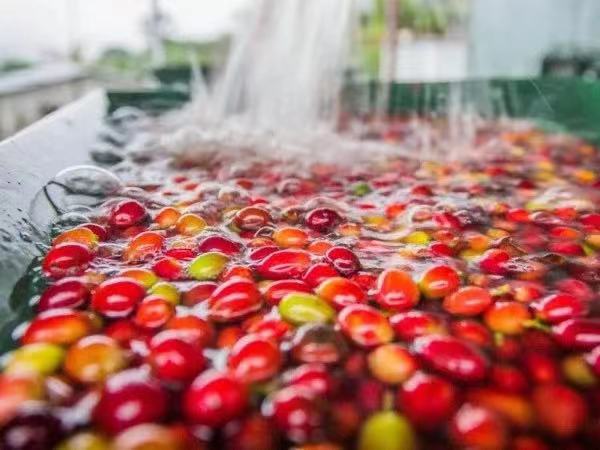
Next, the front street will introduce to you the washing process of coffee beans in Papua New Guinea:
First, the ripe red coffee berries are collected and sent to the manor's own water washing plant for treatment, then washed and fermented three times, soaking for about 24 hours each time, and changing clean water to control the coffee flavor. After cleaning, remove the shell of raw beans and then carry out various grades, such as AA, AB, PB round beans and so on. This fine post-processing method brings bright and delicate sour flavor to the coffee itself, clean and long sweet taste.
The above is the knowledge about the Little Blue Mountain Coffee in Papua New Guinea organized by Qianjie. I believe the coffee fans who have read it have a certain understanding of Little Blue Mountain Coffee and are full of curiosity about the flavor of it. Therefore, Qianjie also hopes that this article can help you choose coffee beans. If coffee fans who usually like Blue Mountain Coffee can try this Little Blue Mountain Coffee!
For more boutique coffee beans, please add private Qianjie coffee on Wechat. WeChat account: kaixinguoguo0925
Important Notice :
前街咖啡 FrontStreet Coffee has moved to new addredd:
FrontStreet Coffee Address: 315,Donghua East Road,GuangZhou
Tel:020 38364473
- Prev

Flavor description of coffee beans in Panamanian jadeite manor
Flavor description of coffee beans in Panamanian jadeite manor taste treatment Panamanian rose grows at an altitude of 1500-1650 meters, the unique growth environment makes it unique: dry fragrance: tea, flowers (magnolia, tulips) vanilla plants, milk, black sugar sweet, high-grade champagne and aroma up. Wet fragrance: apricot, caramel, milk, flower. Sipping: good oil quality and meticulous
- Next
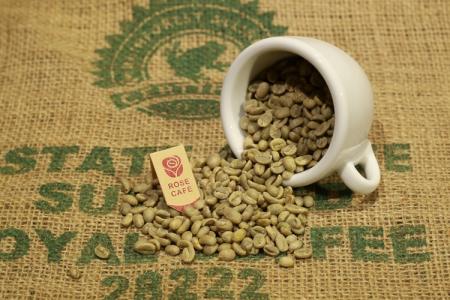
Yega Ficher Manor, planted by European monks.
Yejia Xuefei is actually more common to use the traditional washing method to show her beautiful taste. Yega Xuefei, which is washed with water, has a clean and light taste, with a very strong aroma of jasmine and citrus citric acid. In ancient Chinese, Yirga means to settle down, while Cheffe refers to wetlands, as can be seen from such place names.
Related
- Does Rose Summer choose Blue, Green or Red? Detailed explanation of Rose Summer Coffee plots and Classification in Panamanian Jade Manor
- What is the difference between the origin, producing area, processing plant, cooperative and manor of coffee beans?
- How fine does the espresso powder fit? how to grind the espresso?
- Sca coffee roasting degree color card coffee roasting degree 8 roasting color values what do you mean?
- The practice of lattes: how to make lattes at home
- Introduction to Indonesian Fine Coffee beans-- Java Coffee producing area of Indonesian Arabica Coffee
- How much will the flavor of light and medium roasted rose summer be expressed? What baking level is rose summer suitable for?
- Introduction to the characteristics of washing, sun-drying or wet-planing coffee commonly used in Mantenin, Indonesia
- Price characteristics of Arabica Coffee Bean Starbucks introduction to Manning Coffee Bean Taste producing area Variety Manor
- What is the authentic Yega flavor? What are the flavor characteristics of the really excellent Yejasuffi coffee beans?

